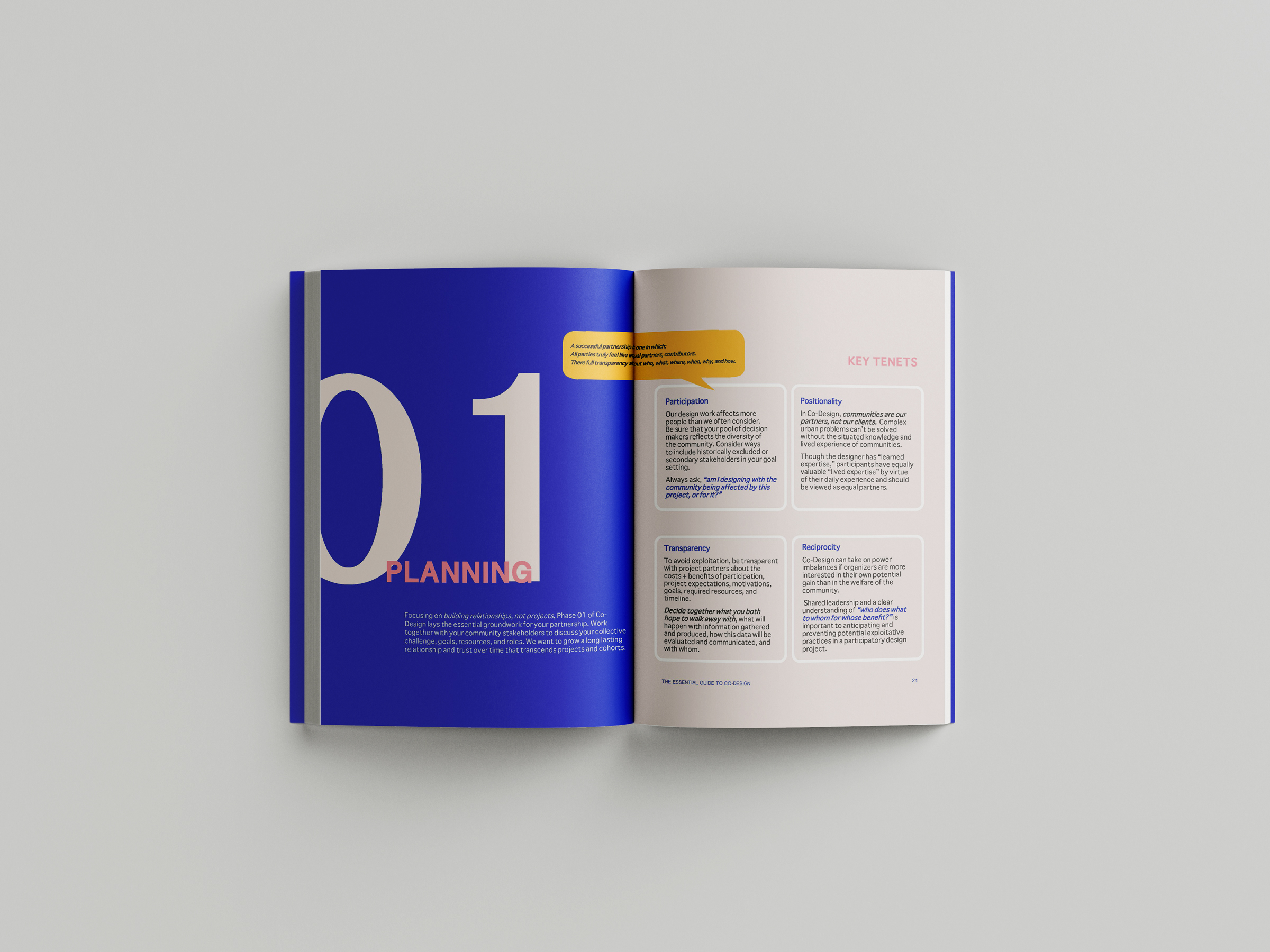The Essential Guide to Co-Design: A Community-Engagement Handbook

Irina Schneid
Vicky Zhang, Student, Art & Design Education ‘25
School of Design
This student and faculty-facing guidebook is the product of 10 years of community-engaged research and practice and 2 years of co-design coordination on behalf of the School of Design. Created in partnership with the Pratt Center for Art, Design, and Community Engagement K-12 as part of their 2023 faculty fellowship, this handbook walks readers through all phases of community partnered design- from relationship building and project planning to workshop facilitation and collaboration to ethical co-evaluation and implementation.
Urging readers to consider what it means to design with, rather than for, the local community, The Essential Guide to Co-Design explores how to co-create knowledge, share leadership, design with empathy, and work to build a more equitable design process. Organized by project phase, the book supports multiple reading modalities. It can be read sequentially as a comprehensive handbook, via selected chapters as a phase-specific reference tool, and as an on-the-go quick guide via its workshop facilitation insert. Key question bubbles, how-to tips, activity prompts, and accessible illustrations supplement the text to activate dialogue and support professional development around working with youth-based community partners.
Structured in five parts – Planning- Learning- Implementing- Evaluating- Case Study this book seeks to create a framework for sustainable delivery and assessment of community partnered projects.
Chapter I: Planning, lays the essential groundwork for community partnership, taking readers through the best practices for ethical communication, power and positionality framing, project goal setting, and best practices for avoiding extractive relationships.
Chapter II: Learning guides readers through an adaptive approach of designing with communities. Spanning research through design, this chapter focuses on empathy-based approaches to designing research, facilitating participatory engagements, co-creation, prototyping, and empowering students and community partners as active participants in the design process.
Chapter III: Implementing, delves into coordination and project management. Supporting different implementation scopes, this chapter takes readers through oversight considerations of project administration, fabrication, purchasing, contracting, as well as communication with all parties involved.
Chapter IV: Evaluating, focuses on supporting and sustaining relationships, seeking to facilitate a meaningful knowledge transfer and establish a critical feedback loop between organizations.
Chapter V: Case-Study, presents the work of the Spring 2023 Co-Design Studio with Gotham Professional Arts Academy. Woven into the context of broader civic engagement efforts at Pratt Institute, this chapter details include key takeaways from community engagement sessions as well as examples of accessible visual representations.
Seeking to lower the barrier for entry into co-design, The Essential Guide to Co-Design supports readers at all levels of community-based experience and interest, and is essential reading for anyone interested in building inclusion and collaboration into their teaching and practice.
